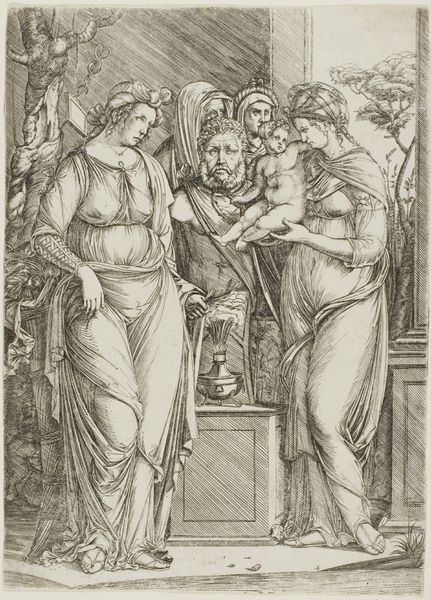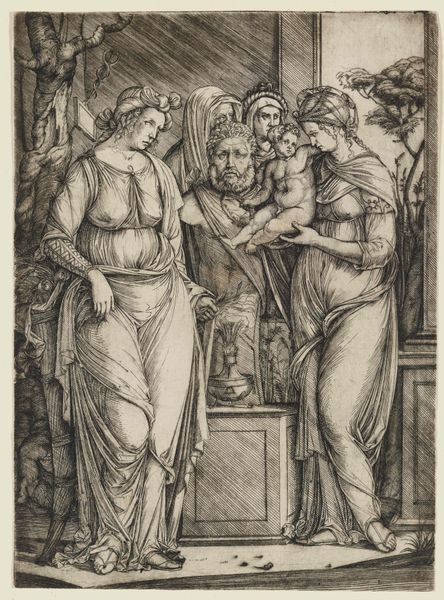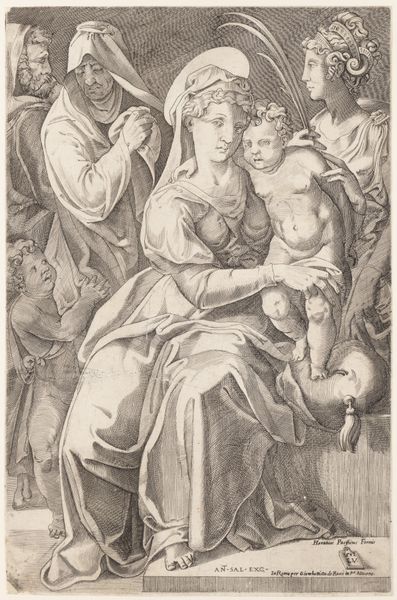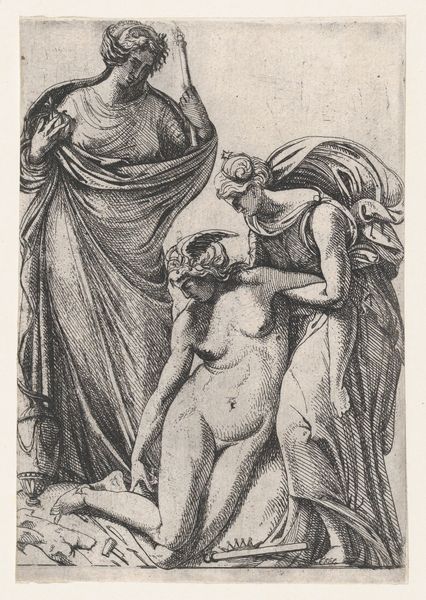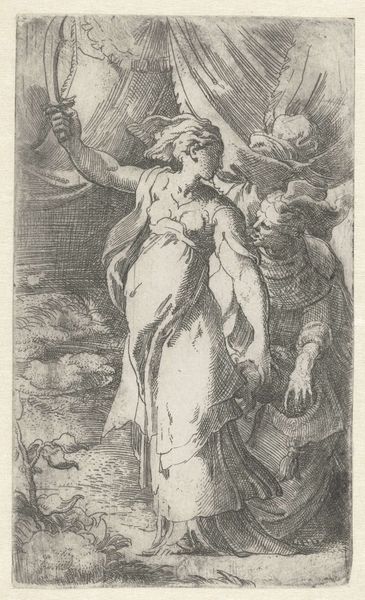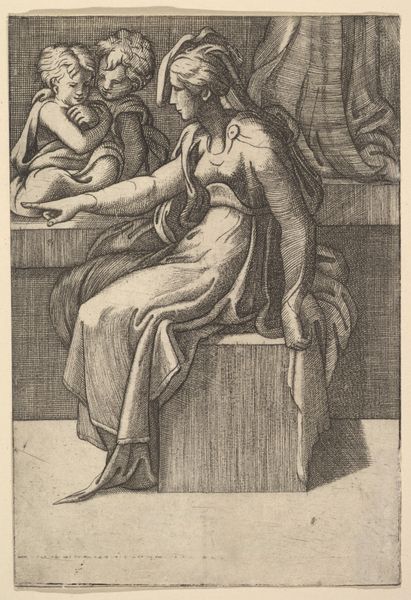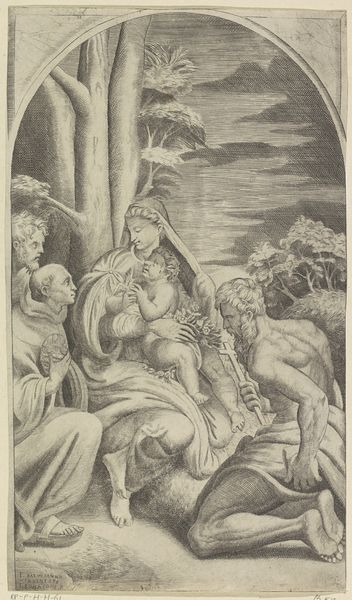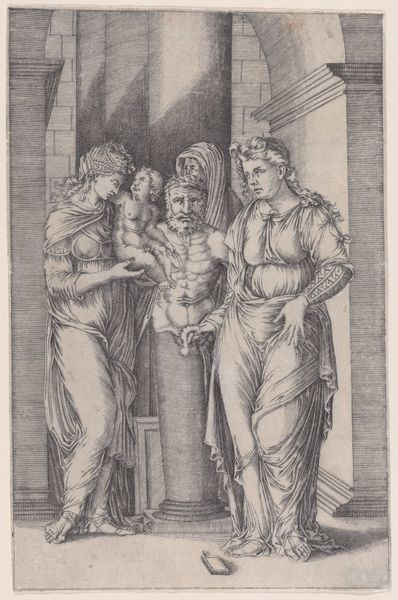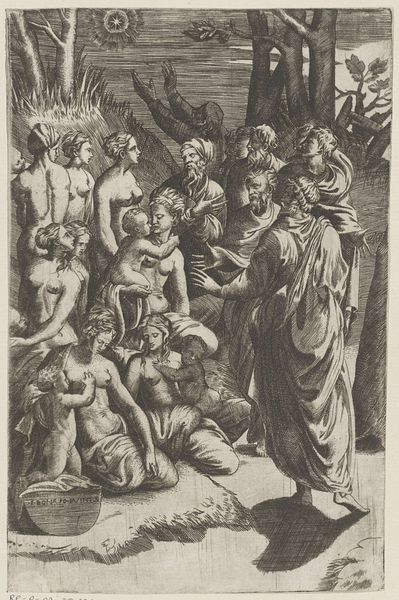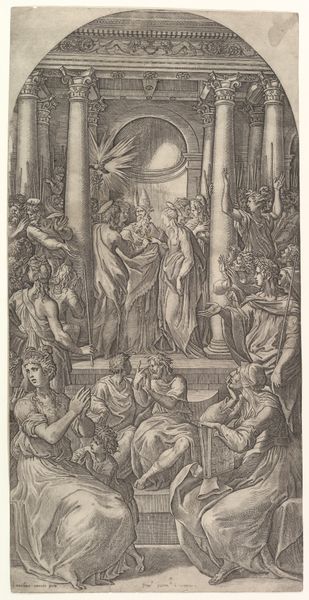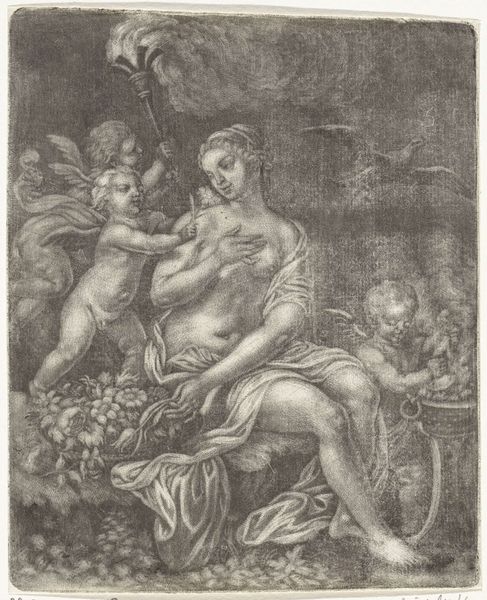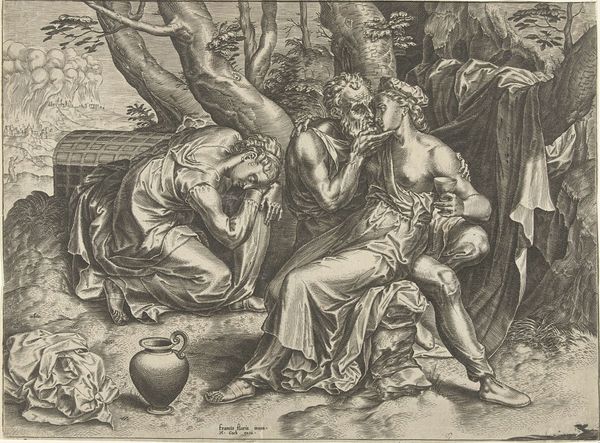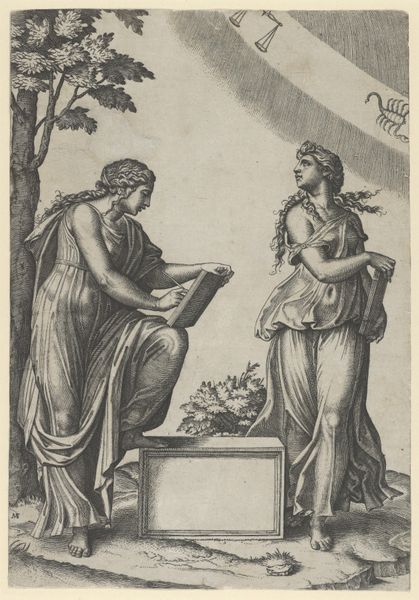
Dimensions: height 226 mm, width 166 mm
Copyright: Rijks Museum: Open Domain
Editor: Here we have Jacopo de' Barbari's engraving, "Four Women Offering a Boy to an Image of Priapus," created around 1500. The composition, with these figures presenting a child to the deity, strikes me as intensely ritualistic and unsettling. What interpretations can we draw from it? Curator: Indeed, the print demands that we engage with the intersection of power, gender, and sacrifice. Note how the women, though active in their offering, seem subjugated. Do you observe how their bodies, while classically rendered, lack agency in the context of this violent ceremony? It invites us to interrogate the historical realities of female submission in patriarchal systems, and how those realities are reflected in artistic representations. What do you think about the gaze the figures make? Editor: The averted gazes of some figures amplify the unsettling feeling. They suggest complicity but also perhaps a forced participation in the ritual. I'm also struck by the presence of Priapus himself. Is he symbolic? Curator: Absolutely. Priapus embodies male dominance and the objectification of fertility. Think of this engraving as a critical commentary on how societal structures historically controlled and commodified not just women's bodies, but also their reproductive capabilities. The act of offering a child to Priapus challenges us to examine the human costs inherent within those power dynamics. Consider the Renaissance context - how does this image of supposed 'rebirth' actually reinforce older oppressive structures? Editor: I see your point about reinforcing older oppressive structures instead of actually showing a Renaissance rebirth. It makes me think about whose "rebirth" the Renaissance truly represented. Looking at the artwork through the lens of gender and power has completely changed my understanding of it. Curator: Precisely! And questioning these so-called historical 'truths' is exactly how we create space for a more just and nuanced dialogue about art and its role in shaping our understanding of the world. There’s a deep discomfort here, one that I hope will invite deeper considerations about historical violence against women and the normalisation of such imagery.
Comments
No comments
Be the first to comment and join the conversation on the ultimate creative platform.
